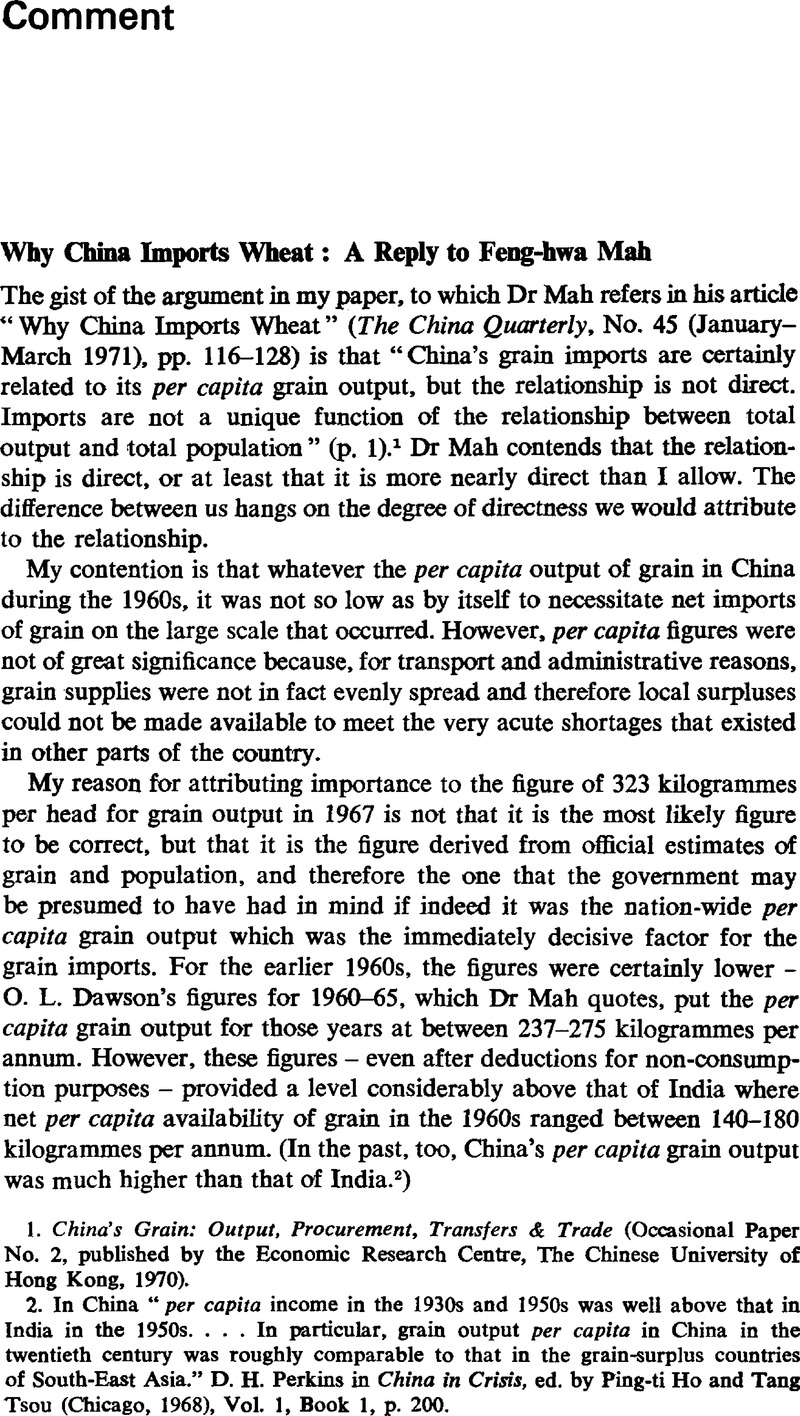No CrossRef data available.
Article contents
Why China Imports Wheat: A Reply to Feng-hwa Mah
Published online by Cambridge University Press: 17 February 2009
Abstract

- Type
- Comment
- Information
- Copyright
- Copyright © The China Quarterly 1971
References
1. China's Grain: Output, Procurement, Transfers & Trade (Occasional Paper No. 2, published by the Economic Research Centre, The Chinese University of Hong Kong, 1970).Google Scholar
2. In China “per capita income in the 1930s and 1950s was well above that in India in the 1950s. … In particular, grain output per capita in China in the twentieth century was roughly comparable to that in the grain-surplus countries of South-East Asia.” Perkins, D. H. in China in Crisis, ed. by Ho, Ping-ti and Tsou, Tang (Chicago, 1968), Vol. 1, Book 1, p. 200.Google Scholar
1. India's net imports of food-grain increased from U.S. $380 million in 1960 to $860 million in 1966. The preliminary figure for 1967 (not including an important amount of food-grain imported on Government account) was $688 million. Calculations based on data in United Nations, Yearbook of International Trade Statistics 1964, pp. 347, 350Google Scholar; same Yearbook for 1967, pp. 381, 385Google Scholar; and same Yearbook for 1968, pp. 385, 387.Google Scholar
2. Professor Donnithorne's assertion, “Dr. Mah cast doubts on whether differences in transport costs of imported and domestic grain supplies have had any influence on decisions to import grain” (emphasis added) is a misunderstanding. My point in this connexion was, “In reality, relative (domestic and external) transport costs are not likely to be an important factor in determining a major change of China's import composition in the 1960s” (emphasis added), p. 121.Google Scholar
3. It is also worthy of note that this reduction of wheat import occurs at a time when decentralization and local self-sufficiency are heavily stressed. See The New York Times, 27 06 1971, pp. 1 and 20Google Scholar. The report, written by Seymour Topping and dispatched from Peking, dated the “heavy emphasis” of decentralization and local self-sufficiency as “since the start of the Cultural Revolution.”
4. “An interview with Premier Chou En-lai of the People's Republic of China,” conducted for the Canadian Broadcasting Corporation, in Peking, by Jean-Luc Pépin, Canadian Minister of Industry, Trade and Commerce and Head of Canadian Trade Mission to China, 2 July 1971. CBC Radio Broadcast, Toronto and Ottawa, 28 07 1971.Google Scholar




